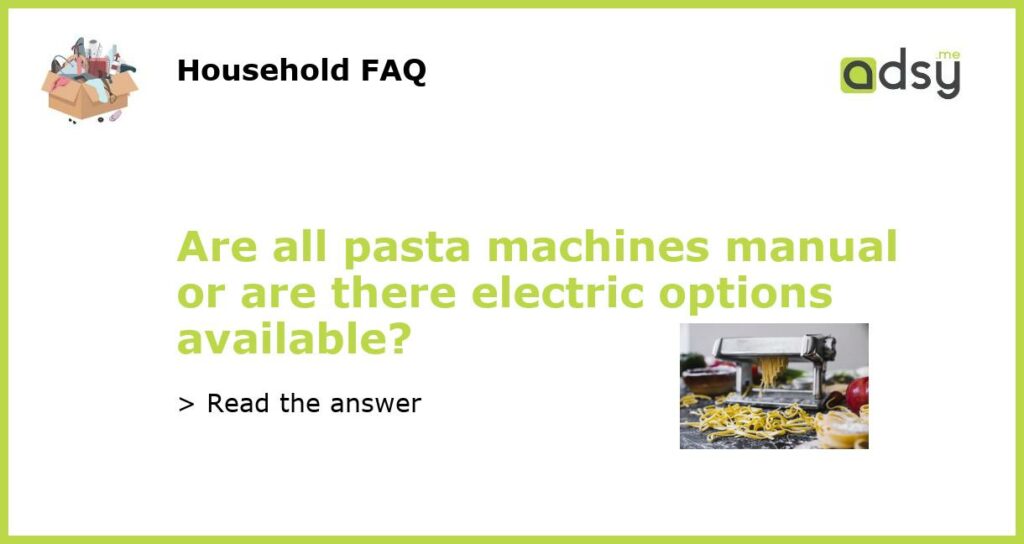The Popularity of Pasta Machines
Pasta machines have become a staple in many kitchens, allowing people to make their own fresh and delicious pasta at home. These machines have gained popularity due to their convenience, versatility, and the ability to create different types of pasta. However, there is a common question that arises when it comes to pasta machines – are they all manual or are there electric options available?
The Traditional Manual Pasta Machines
Manual pasta machines have been around for centuries and are the most commonly used type of pasta machine. They consist of a hand-cranked mechanism that rolls out the pasta dough and cuts it into desired shapes. This traditional design allows for complete control over the pasta-making process, as the user can adjust the thickness and width of the pasta by turning the crank at their own pace. Manual pasta machines are relatively simple to use and require no electricity, making them a popular choice for those who prefer a more hands-on approach to pasta making.
The Emergence of Electric Pasta Machines
In recent years, electric pasta machines have emerged as an alternative to the manual ones. These machines automate the pasta-making process, eliminating the need for manual cranking. Users simply need to feed the pasta dough into the machine, and it automatically rolls and cuts the pasta to the desired specifications. Electric pasta machines offer convenience and time-saving benefits, especially for those who make pasta regularly or in large quantities. They are also a popular choice for individuals with physical limitations or those who prefer a more automated approach to cooking.
Comparing Manual and Electric Pasta Machines
When deciding between a manual and electric pasta machine, there are a few factors to consider. Firstly, the level of control. Manual machines allow for complete control over the pasta-making process as users can adjust the thickness and width of the pasta dough by hand. On the other hand, electric machines may have pre-set thickness options, limiting customization. This factor is important for those who prefer to have precise control over their pasta’s texture and consistency.
Secondly, the speed and efficiency. Electric pasta machines are generally faster than manual ones, as they automate the process. They can roll and cut the pasta in a fraction of the time it takes to do it manually. This is advantageous for busy individuals or those who need to make large quantities of pasta quickly.
Lastly, the cost. Manual pasta machines are usually more affordable than electric ones. They require no electricity to operate and have a simpler design, resulting in a lower price point. Electric machines, on the other hand, tend to be more expensive due to their advanced features and automation.
Choosing the Right Pasta Machine for You
Ultimately, the choice between a manual or electric pasta machine depends on personal preference and individual needs. If you value control and enjoy the traditional, hands-on approach to pasta making, a manual machine might be the best fit for you. However, if convenience, speed, and automation are important to you, an electric machine may be the better option. It’s also worth considering factors such as budget, available kitchen space, and frequency of pasta making before making a decision.






